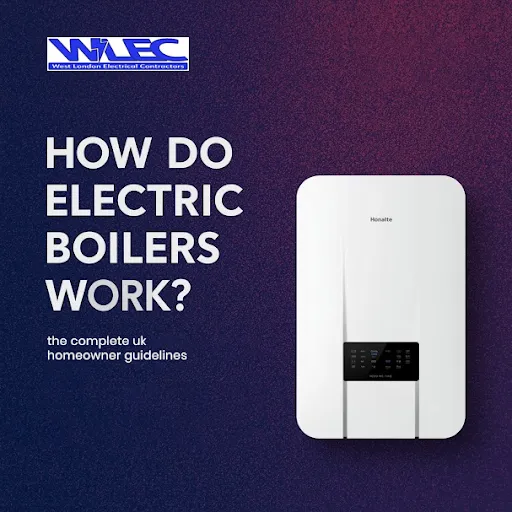
- August 7, 2025
A Complete Guide on LED bulbs, including How Long Do LED Light Bulbs Last? And How Much Energy Do They Save?
LED light bulbs have changed lighting. They offer long life and save energy. But how long do they actually last? Why do some fail early? Can you repair them? And are the energy savings real? This guide answers your key questions with facts and practical tips for UK homeowners. The questions are as follows:
- How Long Do LED Light Bulbs Last?
- Why Did My LED Lights Stop Working?
- Can LED Lights Be Repaired?
- How to Replace an LED Ceiling Light Bulb
- How Much Energy Do LED Light Bulbs Save?
How Long Do LED Light Bulbs Last? The Science Behind the Claims
LED bulbs last much longer than traditional incandescent bulbs, which last about 1,000 hours, and CFLs, which last around 8,000 hours. They can last anywhere from 15,000 to 50,000 hours. That translates to:
- 15-20 years of normal use (3 hours per day).
- 5.5 years if left on 24/7.
Why the huge range? Not all LEDs are created equal. Lifespan depends on:
- Component Quality: Cheap capacitors or drivers fail long before the LED chips.
- Heat Management: LEDs degrade faster in poorly ventilated fixtures (e.g., enclosed ceilings).
- Usage Patterns: Frequent on/off cycling stresses electronics.
- Voltage Stability: Power surges (common in older UK wiring) shorten life.
The “L70” Standard: LED lifespan measures how long it lasts until brightness falls to 70% of its original output, not until it completely fails. A “50,000-hour” bulb may still glow dimly after 20 years.
How Much Energy Do LED Light Bulbs Save? The UK Cost Breakdown
Bulb Type | Wattage | Annual Energy Cost | 10-Year Cost | Savings vs. Incandescent |
Incandescent | 60W | £17.75 | £177.50 | – |
CFL | 14W | £4.14 | £41.40 | £136.10 |
Quality LED | 8W | £2.36 | £23.60 | £153.90 |
Reduced cooling costs (LEDs emit minimal heat) and fewer replacements save time and money in the long term.
Why Did My LED Lights Stop Working? Common Causes of Failure
Even with long lifespans, premature failures happen. Here’s why:
- Driver Failure (Most Common Cause): The driver (internal transformer) regulates voltage. Cheap components or power surges kill it. Symptoms: Flickering, partial dimming, or sudden death.
- Overheating: Trapped heat in recessed or enclosed fixtures cooks electronics. Always check fixture compatibility.
- Poor Ventilation: Dust buildup on heatsinks reduces cooling efficiency.
- Voltage Spikes: Lightning strikes or faulty appliances send surges through wiring. Use surge protectors!
- Incompatible Dimmers: Older “trailing-edge” dimmers cause buzzing, flickering, and damage. Use “LED-compatible” dimmers.
- Moisture Ingress: Bathroom or outdoor LEDs without proper IP ratings (e.g., IP65) corrode internally.
Why Would LED Lights Not Work? Troubleshooting Guide
If your LED bulb won’t turn on or behaves strangely, try this:
- Check the Obvious: Is the bulb loose? Is the switch on? Is the circuit breaker tripped?
- Test the Fixture: Try a different, known-working bulb. If it fails, the issue is the socket, wiring, or switch.
- Inspect Compatibility:
- Is the bulb rated for enclosed fixtures if used in one?
- If dimmable, is your dimmer switch designed for LEDs?
- Look for Flickering/Buzzing: This usually points to:
- Incompatible dimmer switch.
- Faulty driver in the bulb.
- Loose wiring connection.
- Check Voltage: Use a multimeter. Consistently low voltage (<220V) or surges damage LEDs.
Can LED Lights Be Repaired? The Realistic Answer
Generally, no – most household LED bulbs are sealed units. Replacing internal parts, such as drivers or diodes, needs micro-soldering skills. It’s often not cost-effective.
Exceptions:
- High-End Fixtures: Some modular pendant lights or downlights allow driver replacement.
- LED Strips: Damaged sections can be cut out and re-soldered.
- Professional Repair: For expensive architectural or vintage LED fixtures, specialist repair shops may help.
Practical Advice: If a standard bulb fails within warranty (often 3-5 years in the UK), claim a replacement. Otherwise, recycle it responsibly and buy a quality replacement.
How to Replace an LED Ceiling Light Bulb: A Step-by-Step Guide
Replacing integrated or recessed LED ceiling lights differs from traditional bulbs:
What You’ll Need: Ladder, screwdriver (often Phillips), voltage tester, replacement light module (match model number!).
Safety First! ➔ Turn off power at the consumer unit (fuse box). ➔ Verify it’s dead with a voltage tester.
Steps:
- Remove the Trim/Cover: Gently pry or unscrew the outer diffuser/bezel. It may clip in or twist.
- Detach the Module: Unclip or unscrew the LED panel/downlight body from its housing.
- Disconnect Wires: Carefully unplug the connector block (push-in or screw terminal). Note wire positions!
- Install New Module: Connect wires to the new unit (match colours/terminals).
- Secure & Test: Clip/screw the module into place, attach the trim/diffuser, restore power, and test.
Final Words on How Long Do LED Light Bulbs Last
LEDs offer unparalleled lifespan and savings when chosen and used correctly. Invest in quality bulbs. Choose trusted UK brands like Philips or others you trust or like. Make sure they fit your fixtures and dimmers. Also, keep them safe from heat and power surges. They can’t always be fixed, but they last a long time and save energy. This makes them the clear winner in modern lighting. Call a WLEC if your ceiling lights aren’t working or you have electrical issues. Your safety comes first.
For more ideas, check out our guide on Replacing Your Old Bulbs with LED Lights. You can also contact our team for expert LED lighting advice and installation in London.
